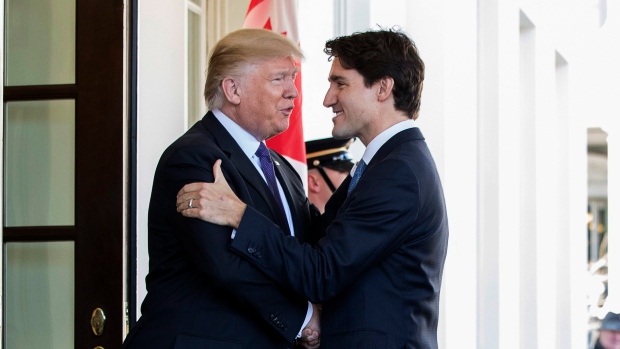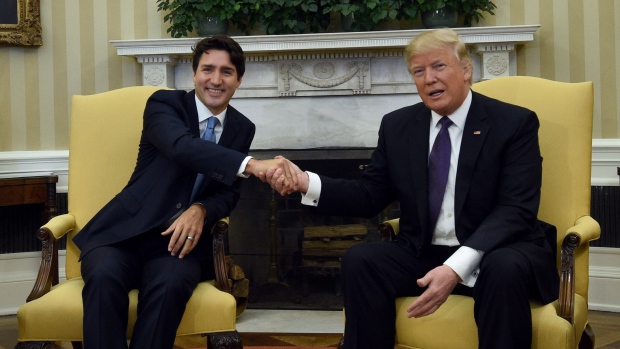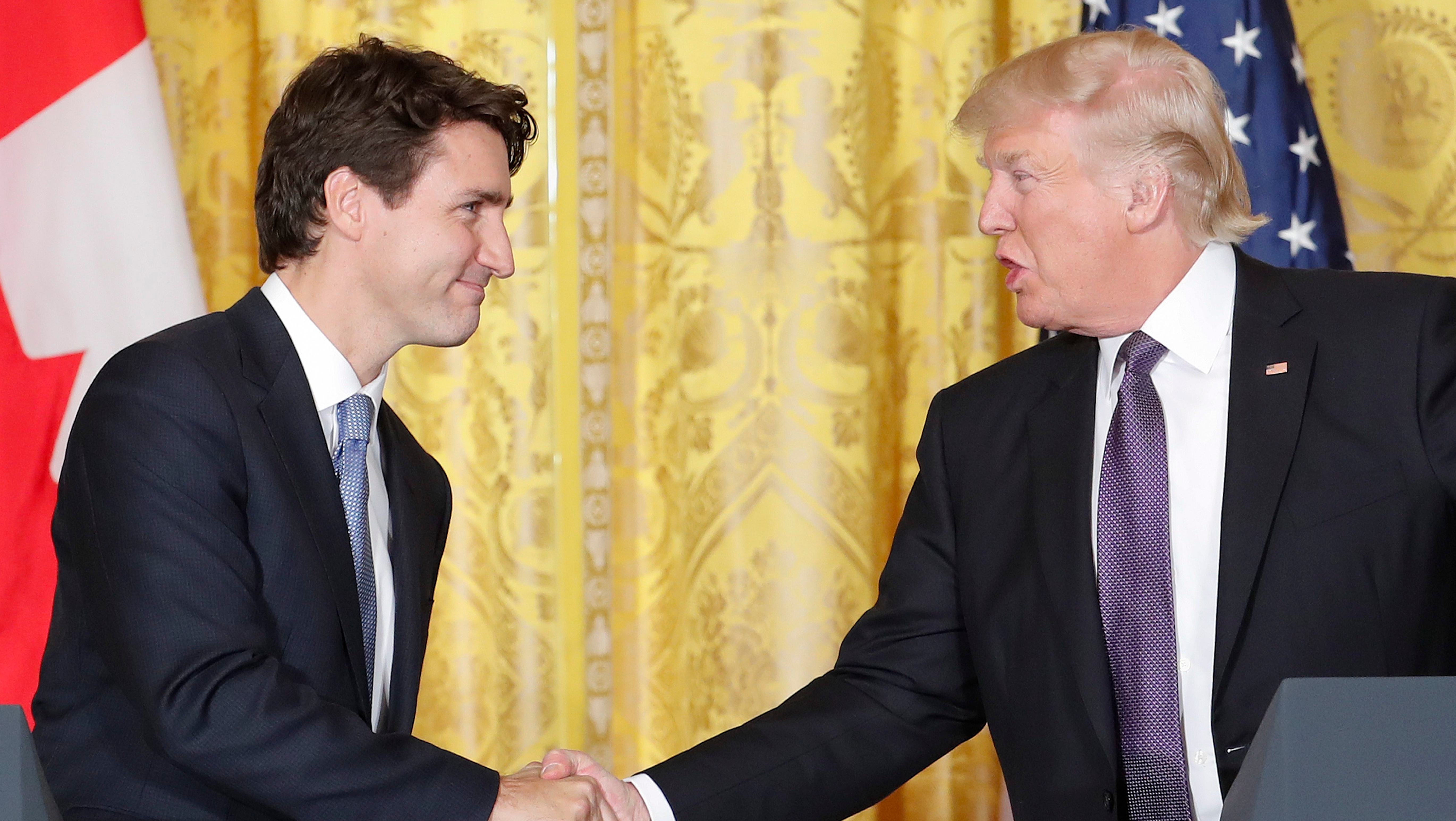Feb 22, 2017
U.S. unlikely to suggest major changes to trade with Canada: Poll
, Reuters

The United States is likely to refrain from suggesting major changes to its trading arrangement with Canada, according to a majority of economists polled by Reuters who also say the Bank of Canada will wait until 2018 before raising rates.
U.S. President Donald Trump has vowed to renegotiate the North American Free Trade Agreement (NAFTA) to make the terms more favorable to Americans. That unnerved Canadian policymakers, given Canada sends over 75 per cent of its exports to the United States.
But at a joint press conference in Washington last week, Trump told Canadian Prime Minister Justin Trudeau that the United States has an outstanding trade relationship with Canada and he will only be "tweaking" it.
In a poll conducted soon after that meeting, all but four of the 23 respondents who answered an extra question said that the eventual tweaks won't be significant. Three analysts said they will be significant and one expected no changes at all.
The tweaks could include alterations to the dispute settlement mechanism and rules of origin criteria and cover the dairy and lumber industries.
"We don't have the details yet. But our assumption is that trade flows continue as normal, hoping that common sense prevails among policymakers because protectionist policies will hurt businesses on both sides of the border," said Krishen Rangasamy, senior economist at National Bank of Canada.

A recovery in oil prices, along with Trump's promises for tax cuts that could underpin the U.S. economy, have prompted economists to bring forward slightly their forecasts for when the Bank of Canada will begin raising rates.
Economists now see the central bank raising rates to 0.75 per cent in the second quarter of 2018, versus the third in January's poll. However, forecasts have oscillated between the first, second and third quarters for the past five months.
The Bank of Canada is unanimously expected to hold rates at 0.50 per cent at its March 1 meeting.
The U.S. Federal Reserve is also most likely to hold in March, although rates there will probably go up in May or June for the third time in the current cycle.
"There are lots of uncertainties not just with regards to U.S. trade policy but the (Canadian) economy itself - we are still recovering from the oil shock," Rangasamy said.
"The Bank of Canada is right in maintaining a cautious stance and will probably keep a dovish message at the coming meeting."
Data on Wednesday showed Canadian retail sales unexpectedly declined in December, marking the biggest drop in nine months, below even the most pessimistic forecast in a Reuters poll.
But, eventually, higher rates in the U.S. and the downward pressure that will put on the Canadian dollar will start to influence expectations about the BoC's own dovish stance.
With inflation still below the Bank's 2 per cent target, analysts in the latest poll gave a median 20 per cent probability the next move by the Bank would be a rate cut.
The chances are low, however, in part because the BoC will be reluctant to stimulate the housing market any further.
The average Canadian household owed $1.67 for every dollar of disposable income in the third quarter of last year, much of it because of mortgage borrowing to chase ever-higher house prices.
After oil - a key Canadian export - collapsed in price in 2014, the Bank looked to non-energy exports to lead the economic rebound in Canada, saying a weaker Canadian dollar and stronger U.S. demand would help. The actual results have been mixed.
Oil prices have doubled over the past year and the Canadian dollar is forecast to weaken further against the greenback as the BoC holds while the Fed continues hiking, provided the economy performs well.
A separate Reuters poll published last week showed economists skeptical, however, that the Trump administration will be able to achieve the 4 percent growth rate this year that it is currently aiming for.


